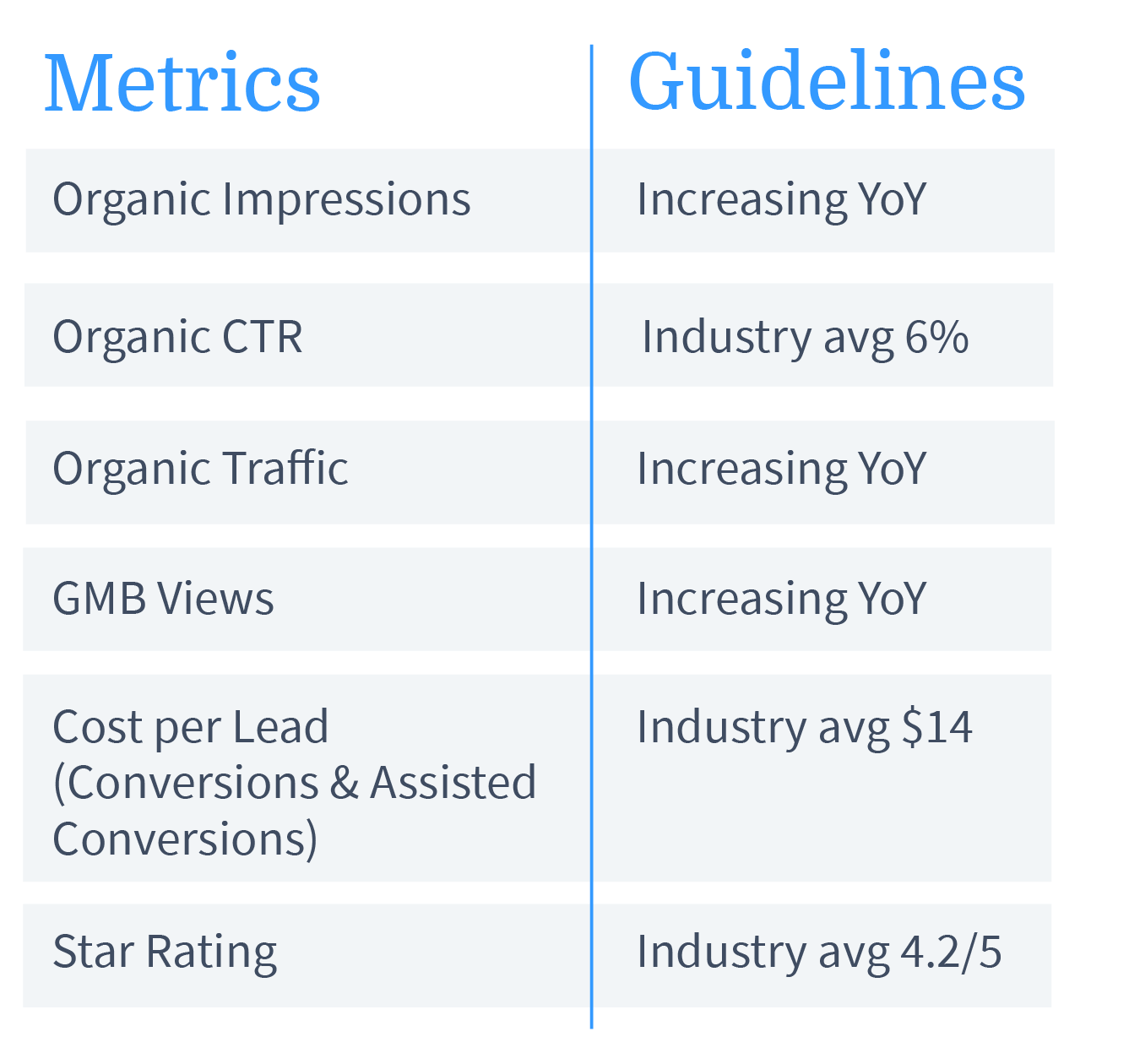Understanding your SEO Reports- Measuring SEO KPIs
Like all facets of digital marketing, there are an incredible number of metrics that analysts and marketers have at their disposal when it comes to Search Engine Optimization (SEO). The question that comes up time and again “How do we know our SEO is working?” can be difficult to answer. Since SEO is a pure form of inbound marketing, there aren’t clear input and output data points like there are with paid advertising. For example, a PPC ad in Google there’s a money input and a click output. With SEO, the equation is much more muddled thanks to the number of outside factors. However, as any data-driven analyst knows, it’s vital to maintain consistency in reporting. In order to understand your SEO’s success, you have to navigate the pitfalls of murky inputs and outputs while staying true to your set goals.

Pitfalls
Understanding common mistakes that people make when reading reports can help to both learn how to avoid said pitfalls, and understand the metrics that go into solid reporting.
Instant Gratification
SEO is not Pay-Per-Click. Any SEO-focused undertaking or project could take weeks or months to be reflected in actual performance fluctuations. Google doesn’t crawl your website every day, so any new content that gets added to a website won’t affect its performance for quite a while. The same goes for updates to local listings, social media platforms, and other off-website changes. I recommend checking back in with your reports after about 45 days to see the effects of any updates.
Misunderstanding Outside Factors
Getting a website to rank in Google means having to play by Google’s rules. There are dozens to hundreds of individual factors that Google uses to decide how a website ranks for a specific search. SEO is also a product of the world around it. This means that events in a city or country can cause interest and search volume to change unrelated to SEO efforts. Attributing a drop or an uptick in performance to one specific action is almost always not the whole picture. A great example of this is the ongoing COVID-19 pandemic which has caused drops in keyword volume for many terms, but also given rise to new others.
Tunnel Vision
Just like your general marketing reports, one of the biggest mistakes people can make is focusing on one metric or situation without taking into account the whole picture. The real world is dynamic, and since SEO is a reflection of how real people are looking online, our interpretations of reporting must take into account the big picture. For example, website load time, or site speed, is a hot-button topic issue for many in the SEO/website field. While site speed is one of the factors that Google looks at for ranking websites, it’s necessary to remember that the more content you add to a site, the slower it will load generally speaking.
Buddy Metrics
Coming to the table equipped with “Buddy Metrics” can help to parse out how your SEO is performing for you at each point along the Look, Learn, Lease, Love marketing funnel.

Organic Impressions
What is it? – Organic impressions are every time your website or local listing is seen on a search engine.
Why do we care? – More impressions means you’re showing up more often and for more keywords. Although they don’t immediately translate to leads and profit, impressions are an excellent pulse-check for how your SEO is working.
Organic CTR
What is it? – Organic CTR or Click Through Rate is a measure of how often a website is being clicked on relative to how often it’s showing up in search results. It is calculated with the simple formula of Clicks/Impressions = CTR
Why do we care? – Organic CTR is one of the best possible ways to compare a website’s SEO presence to competitors and the industry.
Organic Traffic
What is it? – All the hits to a website that came from an organic source – aka, a Search Engine.
Why do we care? – This is SEO’s most valuable metric. The reason for working on SEO is to increase organic traffic, which is the most valuable type of traffic in terms of conversion rate.
Organic Conversions
What is it? – Conversions are when a user performs a desired action on your website or listing. At 30 lines, we try to make sure that all your organic conversions are directly translatable to leads.
Why do we care? – Conversions are the money maker that all of your marketing is working towards. A lead is an opportunity to close and therefore, to make a sale.
Star Rating
What is it? – Star ratings appear in most ILSs and local listings and are a direct representation of how prospects and renters view your property or company.
Why do we care? – Star rating is incredibly crucial for SEO, especially Google star rating. Because most organic traffic comes from Google, there is a very high likelihood that the user will see your star rating before they click to your website. The lower your star rating is, the higher the chance they lose interest in renting at your property.

Although SEO can seem daunting, remaining consistent with your analytics while keeping in mind the whole picture can go a long way towards understanding its effectiveness. And remember to look for trends to determine what tactics are working best for your specific website.
We’re also always here to help with any questions that you may have.

